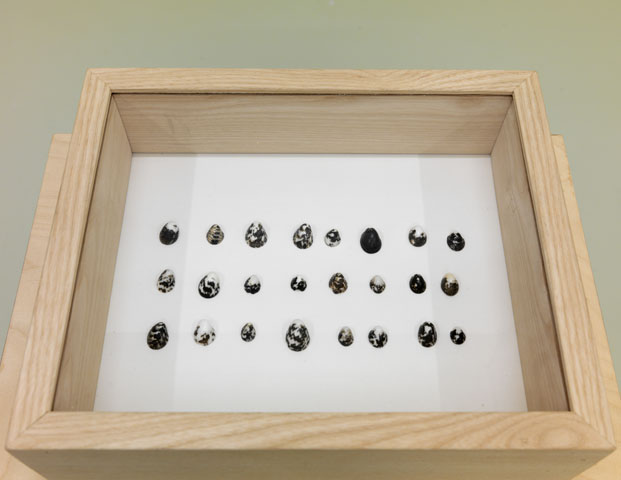the real works
The body of work made by de vries between 1955 and the early seventies constitutes an extraordinarily rigorous intellectual, philosophical and spiritual preparation for the life-work of hís subsequent career as an artist. From some time in the mid-sixties de vries underwent a period of personal and professional crisis, a journey of contemplation, self-redefinition and renewed dedication to his vocation as an artist. In 1968 he resigned his post at the research institute at Arnhem, and within a year he had left his home and family and begun the first of many journeys to other parts of the world - to India, Africa, Scotland, the Middle East, the Seychelles, the Canary Islands.
In 1970 on the beach at Mahé in the Seychelles de vries picked up two handfuls of broken white coral, and observed, as if it were a revelation, that every piece was created by the same process, and yet that each was utterly distinct from the other: what was the same was different.
From the same beach de vries took twenty-four [twenty-five] seashells of the same species, and arranged them in a small cabinet frame in a three-line grid. "what is the case, the fact, is the existence of atomic facts" wrote Wittgenstein in Tractatus, Proposition 2. A fact is an abstract classification: that the shells presented in the work are of a given species of mollusc is a taxonomic fact. As shells, however, they are irreducibly things, and every one is different from every other. collected mahé, seychelles (august 1970) presents us not with facts but with the actuality of twenty-four unique seashells. It is the first of what de vries has called 'the real works', and it inaugurates an extraordinary and sustained artistic-philosophical project of great significance and like no other in the art of our time.
Source: Mel Gooding, herman de vries. chance and change (Thames and Hudson : London 2006) 41.

